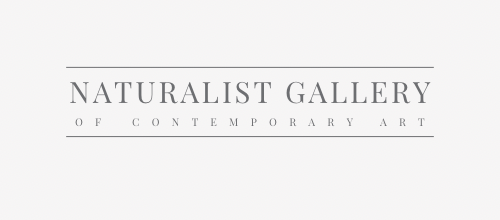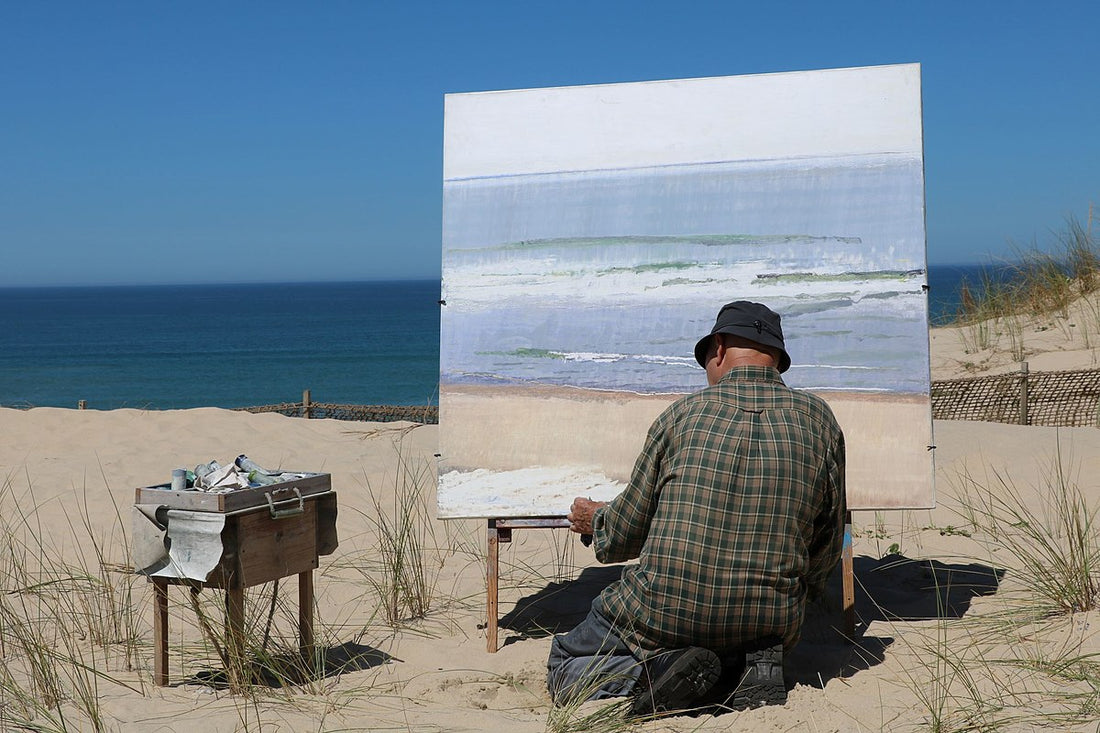Featured Image: Un Peintre de Plein Air (2019) Anthony Baratier
"En plein air" is the act of painting outdoors, embracing natural light and landscapes. It allows artists to capture changing weather and light details. Popularized by French impressionists like Monet, it continues to inspire artists to connect with nature's essence on canvas.
Pierre-Auguste Renoir (1873) Monet Painting in His Garden
Explore our curated selection of contemporary artists from around the globe.
Naturalist Gallery offers artist representation internationally. Apply your art.
En plein air (pronounced [ɑ̃ plɛ.n‿ɛʁ]; French for 'outdoors'), or plein-air painting, is the act of painting outdoors. This method contrasts with studio painting or academic rules that might create a predetermined look. The theory of 'En plein air' painting is credited to Pierre-Henri de Valenciennes (1750–1819), first expounded in a treatise entitled Reflections and Advice to a Student on Painting, Particularly on Landscape (1800), where he developed the concept of landscape portraiture by which the artist paints directly onto canvas in situ within the landscape. It enabled the artist to better capture the changing details of weather and light. The invention of portable canvases and easels allowed the practice to develop, particularly in France, and in the early 1830s the Barbizon school of painting in natural light was highly influential.
Théodore Rousseau (1857) Becquigny, Somme
History: Before the 19th century, artists had mixed their own paints from raw pigments that they often ground themselves from a variety of media. This had made for inconvenient portability and kept most painting activities confined to the studio. However, in the 1830s, the Barbizon school in France that included Charles-François Daubigny and Théodore Rousseau used the practice of en plein air to depict the changing appearance of light accurately as weather conditions altered. This situation improved later in the 1800s when tubes of oil paint became available, allowing En plein air painting to become viable for more artists, the collapsible paint tube being invented in 1841 by American portraitist John G. Rand.
In the early 1860s, four young painters: Claude Monet, Pierre-Auguste Renoir, Alfred Sisley and Frédéric Bazille, met whilst studying under the academic artist Charles Gleyre. They discovered that they shared an interest in painting landscape and contemporary life, and they often ventured into the countryside together to paint in the open air. They discovered that they could paint in sunlight directly from nature, and making use of the vivid synthetic pigments that were available, they began to develop a lighter and brighter manner of painting that extended further the Realism of Gustave Courbet and the Barbizon school. It was radical practice at its inception, but by the later decades of the 19th-century, the theory had been absorbed into normal artistic practice.
Théodore Rousseau (1834) Mont Blanc Seen from La Faucille, Storm Effect
Equipment and Challenges: It was during the mid-19th century that the 'box easel', typically known as the 'French box easel' or 'field easel', was invented. It is uncertain who developed it, but these highly portable easels with telescopic legs and built-in paint box and palette made it easier to go into the forest and up the hillsides. Still made today, they remain a popular choice (even for home use) since they fold up to the size of a brief case and thus are easy to store.
The Pochade Box is a compact box that allows the artist to keep all their supplies and palette within the box and have the work on the inside of the lid. Some designs allow for a larger canvas which can be held by clamps built into the lid. There are designs that can also hold a few wet painting canvases or panels within the lid. These boxes have a rising popularity as while they are mainly used for plein air painting, they can also be used in the studio, home, or classroom. Since pochade boxes are mainly used for painting on location, the canvas or work surface may be small, usually not more than 20 inches (50 cm).
Challenges include the type of paint used to paint outdoors, animals, bugs, onlookers, and environmental conditions such as weather. Acrylic paint may harden and dry quickly in warm, sunny weather, and it cannot be reused. On the opposite side of the spectrum is the challenge of painting in moist or damp conditions with precipitation. The advent of plein air painting predated the invention of acrylics. The traditional and well-established method of painting en plein air incorporates the use of oil paint.
Vasily Polenov (1880) Early Snow
Advocates: French impressionist painters such as Claude Monet, Camille Pissarro, Alfred Sisley, and Pierre-Auguste Renoir advocated plein air painting, and much of their work was done outdoors in the diffuse light of a large white umbrella. Claude Monet was an avid en plein air artist who deduced that to seize the closeness and likeness of an outside setting at a specific moment, one had to be outside to do so rather than just paint an outside setting in their studio. In the second half of the 19th century and beginning of the 20th century in Russia, painters such as Vasily Polenov, Isaac Levitan, Valentin Serov, Konstantin Korovin, and I. E. Grabar were known for painting en plein air.
Isaac Levitan (1900, the last, unfinished Levitan painting) LakeView limited edition prints by contemporary artists at Naturalist Gallery.
En plein air painting continues to be a flourishing trend in the art world, with artists coming together for "paint out" excursions and workshops devoted to the practice. Landscape painters find plein air painting as rewarding and powerful an experience as it was for the first plein air painters all those years ago. The legacy of this art form lives on, inspiring artists to connect with nature's beauty and capture its essence on canvas.
Camille Pissarro (1897) The Boulevard Montmartre at Night
You may also find the following articles helpful:
Understanding Chiaroscuro in Art
Understanding Memento Mori in Art
What is Tone in Art: Understanding Color Value
Comparing All Paint Mediums: A Comprehensive Guide
How to Clean and Preserve Oil Paintings
How to Get Your Work in an Art Gallery
How to Sell Art on Consignment

Claude Monet (1882) Cliff Walk at Pourville


